- Home
- Lewis Carroll
The Annotated Alice
The Annotated Alice Read online
The culmination of a lifetime of scholarship, The Annotated Alice is a landmark event in the rich history of Lewis Carroll and cause to celebrate the remarkable career of Martin Gardner.
For over half a century, Martin Gardner has established himself as one of the world’s leading authorities on Lewis Carroll. His Annotated Alice, first published in 1959, has over half a million copies in print around the world and is beloved by both families and scholars—for it was Gardner who first decoded many of the mathematical riddles and wordplay that lay ingeniously embedded in Carroll’s two classic stories, Alice’s Adventures in Wonderland and Through the Looking-Glass.
Forty years after this groundbreaking publication, W. W. Norton is proud to publish the Definitive Edition of The Annotated Alice, a work that finally combines the annotations of Gardner’s 1959 edition with his 1990 volume, More Annotated Alice, as well as additional discoveries drawn from Gardner’s encyclopedic knowledge of the texts. Illustrated with John Tenniel’s classic, beloved art—along with many recently discovered Tenniel pencil sketches—The Annotated Alice will be Martin Gardner’s most beautiful and enduring tribute to Lewis Carroll’s masterpieces yet.
OTHER ANNOTATED BOOKS FROM W. W. NORTON & COMPANY
* * *
The Annotated Wizard of Oz
by L. Frank Baum, edited with an introduction
and notes by Michael Patrick Hearn
The Annotated Huckleberry Finn
by Mark Twain, edited with an introduction
and notes by Michael Patrick Hearn
The Annotated Christmas Carol
by Charles Dickens, edited with an introduction
and notes by Michael Patrick Hearn
The New Annotated Sherlock Holmes
Volumes I, II, and III
by Sir Arthur Conan Doyle, with an introduction
by John le Carré, edited with a preface and notes by Leslie S. Klinger
The Annotated Classic Fairy Tales
edited with an introduction and notes by Maria Tatar
The Annotated Brothers Grimm
by Jacob and Wilhelm Grimm, with an introduction by A. S. Byatt,
edited with a preface and notes by Maria Tatar
The Annotated Hunting of the Snark
by Lewis Carroll, with an introduction by Adam Gopnik,
edited with notes by Martin Gardner
The Annotated Uncle Tom’s Cabin
by Harriet Beecher Stowe, edited with an introduction
and notes by Henry Louis Gates Jr. and Hollis Robbins
The Annotated Hans Christian Andersen
translated by Maria Tatar and Julie Allen, with an introduction
and notes by Maria Tatar
The Annotated Secret Garden
by Frances Hodgson Burnett, edited with an introduction
and notes by Gretchen Holbrook Gerzina
The New Annotated Dracula
by Bram Stoker, with an introduction by Neil Gaiman,
edited with a preface and notes by Leslie S. Klinger
The Annotated Wind in the Willows
by Kenneth Grahame, edited with a preface
and notes by Annie Gauger, with an introduction by Brian Jacques
The Annotated Peter Pan
by J. M. Barrie, edited with an introduction
and notes by Maria Tatar
Lewis Carroll
W • w • Norton & Company
New York • London
Copyright© 2000, 1990, 1988, 1960 by Martin Gardner
Previous editions published as The Annotated Alice (1960) and More Annotated Alice (1990)
All rights reserved
Printed in the United States of America
For information about permission to reproduce selections from this book, write to
Permissions, W. W. Norton & Company, Inc., 500 Fifth Avenue, New York, NY 10110
* * *
The text of this book is composed in Devinne text,
with the display set in Mona Lisa and Engravers Roman
Composition by Allentown Digital Services
Manufacturing by The Maple-Vail Book Manufacturing Group
Book design by Antonina Krass
Page makeup by Carole Desnoes
Frontispiece: Posthumous painting of Lewis Carroll by Sir Hubert von Herkomer.
Courtesy Christ Church Picture Gallery, Oxford.
* * *
Library of Congress Cataloging-in-Publication Data
Carroll, Lewis, 1832–1898.
[Alice’s adventures in Wonderland]
The annotated Alice : Alice’s adventures in Wonderland & Through the looking-glass / by Lewis Carroll ; with illustrations by John Tenniel ; updated, with an introduction and notes by Martin Gardner.—Definitive ed.
p. cm.
This edition combines the notes of Gardner’s 1960, The annotated Alice with his 1990 update, More annotated Alice, as well as additional discoveries and updates drawn from Gardner’s encyclopedic knowledge of the texts. It includes Tenniel’s classic art with some recently discovered Tenniel pencil sketches.
Includes bibliographical references.
ISBN 978-0-393-04847-6
1. Fantasy fiction, English. 2. Carroll, Lewis, 1832–1898. Alice’s adventures in wonderland. 3. Carroll, Lewis, 1832–1898. Through the looking-glass. 4. Fantasy fiction, English—History and criticism. 5. Alice (Fictitious character : Carroll)—Fiction. 6. Alice (Fictitious character : Carroll) I. Gardner, Martin, 1914–. II. Tenniel, John, Sir, 1820–1914. III. Carroll, Lewis, 1832–1898. Through the looking-glass. IV. Title: Through the looking-glass. V. Title. VI. Title: Annotated Alice—the definitive edition
PR4611 .A7 1999
823’ .8—dc21
99-35647
CIP
W. W. Norton & Company, Inc., 500 Fifth Avenue, New York, NY 10110
www.wwnorton.com
W. W. Norton & Company Ltd., Castle House, 75/76 Wells Street, London W1T 3QT
4 5 6 7 8 9 0
To the thousands of readers of my
Annotated Alice and More Annotated Alice
who took the time to send letters of appreciation,
and to offer corrections and suggestions
for new notes.
Contents
Preface to the Definitive Edition of The Annotated Alice
Introduction to The Annotated Alice
Introduction to More Annotated Alice
Alice’s Adventures in Wonderland
Through the Looking-Glass and What Alice Found There
The Wasp in a Wig
Original Pencil Sketches by Tenniel
A Note about Lewis Carroll Societies
Selected References
Alice on the Screen, by David Schaefer
Alice, Where Art Thou?
Quaint child, old-fashioned Alice, lend your dream:
I would be done with modern story-spinners,
Follow with you the laughter and the gleam:
Weary am I, this night, of saints and sinners.
We have been friends since Lewis and old Tenniel
Housed you immortally in red and gold.
Come! Your naivete is a spring perennial:
Let me be young again before I’m old.
You are a glass of youth: this night I choose
Deep in your magic labyrinths to stray,
Where rants the Red Queen in her splendid hues
And the White Rabbit hurries on his way.
Let us once more adventure, hand in hand:
Give me belief again—in Wonderland!
—Vincent Starrett, in Brillig (Chicago: Dierkes Press, 1949)
Preface to
the Definitive Edition of
The
Annotated Alice
The Annotated Alice was first published in 1960 by Clarkson Potter. It went through many printings here and in England, in hardcover and paperback, and was translated into Italian, Japanese, Russian, and Hebrew. I was unable to persuade Crown, which took over Potter before Crown was in turn taken over by Random House, to let me do a major revision of the book by adding a raft of new notes that had accumulated in my files. I finally decided to put them in a sequel titled More Annotated Alice. Random House published it in 1990, thirty years after the previous book.
To distinguish the sequel from The Annotated Alice I substituted Peter Newell’s 80 full-page illustrations for Tenniel’s art. Michael Patrick Hearn contributed a fine essay on Newell. I also was able to add to More Annotated Alice the long-lost “Wasp in a Wig” episode that Carroll left out of his second Alice book after Tenniel strongly urged him to remove it, but one still had to open two separate Alice books simultaneously, which seemed a bit impractical.
In 1998 I was surprised and delighted when my editor at Norton, Robert Weil, suggested that the notes from both Alice books be combined in a single “definitive” edition. They are all here, some of them expanded, and many new notes have been added. Tenniel’s pictures in The Annotated Alice were poorly reproduced, bristling with broken type and fuzzy lines. For this volume they have been faithfully copied in their original clarity.
The “Wasp in a Wig” episode is included in this book, along with the introduction and notes I wrote for its first publication by the Lewis Carroll Society of North America in a 1977 limited edition. I had the great pleasure of tracking down the New York City collector who had bought the original galleys at a London auction, and persuaded him to let me reprint them in a small book.
In addition to thanking Weil for making this edition possible, I also thank Justin Schiller, the nation’s top seller and collector of rare books for children, for permission to include reproductions of Tenniel’s preliminary sketches from Schiller’s book Alice’s Adventures in Wonderland, privately printed in 1990. Thanks, too, to David Schaefer for providing a checklist of film productions of Alice, based on his great collection of such films.
Introduction to
The Annotated Alice
Let it be said at once that there is something preposterous about an annotated Alice. Writing in 1932, on the hundred-year anniversary of Lewis Carroll’s birth, Gilbert K. Chesterton voiced his “dreadful fear” that Alice’s story had already fallen under the heavy hands of the scholars and was becoming “cold and monumental like a classic tomb.”
“Poor, poor, little Alice!” bemoaned G.K. “She has not only been caught and made to do lessons; she has been forced to inflict lessons on others. Alice is now not only a schoolgirl but a schoolmistress. The holiday is over and Dodgson is again a don. There will be lots and lots of examination papers, with questions like: (1) What do you know of the following; mimsy, gimble, haddocks’ eyes, treacle-wells, beautiful soup? (2) Record all the moves in the chess game in Through the Looking-Glass, and give diagram. (3) Outline the practical policy of the White Knight for dealing with the social problem of green whiskers. (4) Distinguish between Tweedledum and Tweedledee.”
There is much to be said for Chesterton’s plea not to take Alice too seriously. But no joke is funny unless you see the point of it, and sometimes a point has to be explained. In the case of Alice we are dealing with a very curious, complicated kind of nonsense, written for British readers of another century, and we need to know a great many things that are not part of the text if we wish to capture its full wit and flavor. It is even worse than that, for some of Carroll’s jokes could be understood only by residents of Oxford, and other jokes, still more private, could be understood only by the lovely daughters of Dean Liddell.
The fact is that Carroll’s nonsense is not nearly as random and pointless as it seems to a modern American child who tries to read the Alice books. One says “tries” because the time is past when a child under fifteen, even in England, can read Alice with the same delight as gained from, say, The Wind in the Willows or The Wizard of Oz. Children today are bewildered and sometimes frightened by the nightmarish atmosphere of Alice’s dreams. It is only because adults—scientists and mathematicians in particular—continue to relish the Alice books that they are assured of immortality. It is only to such adults that the notes of this volume are addressed.
There are two types of notes I have done my best to avoid, not because they are difficult to do or should not be done, but because they are so exceedingly easy to do that any clever reader can write them out for himself. I refer to allegorical and psychoanalytic exegesis. Like Homer, the Bible, and all other great works of fantasy, the Alice books lend themselves readily to any type of symbolic interpretation—political, metaphysical, or Freudian. Some learned commentaries of this sort are hilarious. Shane Leslie, for instance, writing on “Lewis Carroll and the Oxford Movement” (in the London Mercury, July 1933), finds in Alice a secret history of the religious controversies of Victorian England. The jar of orange marmalade, for example, is a symbol of Protestantism (William of Orange; get it?). The battle of the White and Red Knights is the famous clash of Thomas Huxley and Bishop Samuel Wilberforce. The blue Caterpillar is Benjamin Jowett, the White Queen is Cardinal John Henry Newman, the Red Queen is Cardinal Henry Manning, the Cheshire Cat is Cardinal Nicholas Wiseman, and the Jabberwock “can only be a fearsome representation of the British view of the Papacy…”
In recent years the trend has naturally been toward psychoanalytic interpretations. Alexander Woollcott once expressed relief that the Freudians had left Alice’s dreams unexplored; but that was twenty years ago and now, alas, we are all amateur head-shrinkers. We do not have to be told what it means to tumble down a rabbit hole or curl up inside a tiny house with one foot up the chimney. The rub is that any work of nonsense abounds with so many inviting symbols that you can start with any assumption you please about the author and easily build up an impressive case for it. Consider, for example, the scene in which Alice seizes the end of the White King’s pencil and begins scribbling for him. In five minutes one can invent six different interpretations. Whether Carroll’s unconscious had any of them in mind, however, is an altogether dubious matter. More pertinent is the fact that Carroll was interested in psychic phenomena and automatic writing, and the hypothesis must not be ruled out that it is only by accident that a pencil in this scene is shaped the way it is.
We must remember also that many characters and episodes in Alice are a direct result of puns and other linguistic jokes, and would have taken quite different forms if Carroll had been writing, say, in French. One does not need to look for an involved explanation of the Mock Turtle; his melancholy presence is quite adequately explained by mock-turtle soup. Are the many references to eating in Alice a sign of Carroll’s “oral aggression,” or did Carroll recognize that small children are obsessed by eating and like to read about it in their books? A similar question mark applies to the sadistic elements in Alice, which are quite mild compared with those of animated cartoons for the past seventy years. It seems unreasonable to suppose that all the makers of animated cartoons are sado-masochists; more reasonable to assume that they all made the same discovery about what children like to see on the screen. Carroll was a skillful storyteller, and we should give him credit for the ability to make a similar discovery. The point here is not that Carroll was not neurotic (we all know he was), but that books of nonsense fantasy for children are not such fruitful sources of psychoanalytic insight as one might suppose them to be. They are much too rich in symbols. The symbols have too many explanations.
Readers who care to explore the various conflicting analytic interpretations that have been made of Alice will find useful the references cited in the bibliography at the back of this book. Phyllis Greenacre, a New York psychoanalyst, has made the best and most detailed study of Carroll from this point of view. Her arguments are most ingenious, possibly true, but one wishes that she wer
e less sure of herself. There is a letter in which Carroll speaks of his father’s death as “the greatest blow that has ever fallen on my life.” In the Alice books the most obvious mother symbols, the Queen of Hearts and the Red Queen, are heartless creatures, whereas the King of Hearts and the White King, both likely candidates for father symbols, are amiable fellows. Suppose, however, we give all this a looking-glass reversal and decide that Carroll had an unresolved Oedipus complex. Perhaps he identified little girls with his mother so that Alice herself is the real mother symbol. This is Dr. Greenacre’s view. She points out that the age difference between Carroll and Alice was about the same as the age difference between Carroll and his mother, and she assures us that this “reversal of the unresolved Oedipal attachment is quite common.” According to Dr. Greenacre, the Jabberwock and Snark are screen memories of what analysts still persist in calling the “primal scene.” Maybe so; but one wonders.
The inner springs of the Reverend Charles Lutwidge Dodgson’s eccentricities may be obscure, but the outer facts about his life are well known. For almost half a century he was a resident of Christ Church, the Oxford college that was his alma mater. For more than half that period he was a teacher of mathematics. His lectures were humorless and boring. He made no significant contributions to mathematics, though two of his logical paradoxes, published in the journal Mind, touch on difficult problems involving what is now called metalogic. His books on logic and mathematics are written quaintly, with many amusing problems, but their level is elementary and they are seldom read today.
In appearance Carroll was handsome and asymmetric—two facts that may have contributed to his interest in mirror reflections. One shoulder was higher than the other, his smile was slightly askew, and the level of his blue eyes not quite the same. He was of moderate height, thin, carrying himself stiffly erect and walking with a peculiar jerky gait. He was afflicted with one deaf ear and a stammer that trembled his upper lip. Although ordained a deacon (by Bishop Wilberforce) he seldom preached because of his speech defect and he never went on to holy orders. There is no doubt about the depth and sincerity of his Church of England views. He was orthodox in all respects save his inability to believe in eternal damnation.

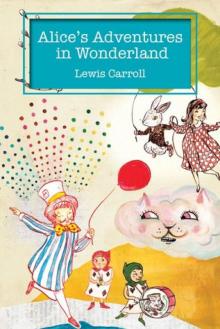 Alice's Adventures in Wonderland & Through the Looking-Glass
Alice's Adventures in Wonderland & Through the Looking-Glass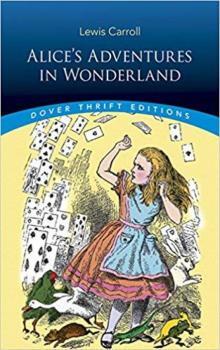 Alice's Adventures in Wonderland
Alice's Adventures in Wonderland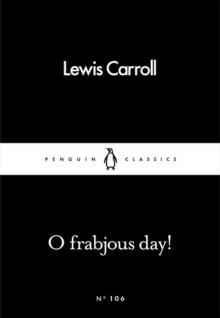 O Frabjous Day!
O Frabjous Day! Jabberwocky and Other Nonsense
Jabberwocky and Other Nonsense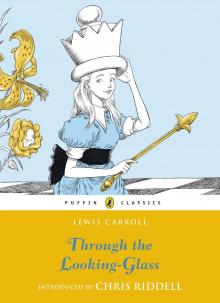 Through the Looking-Glass and What Alice Found There
Through the Looking-Glass and What Alice Found There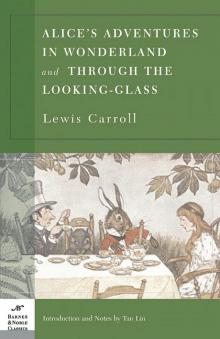 Alice's Adventures in Wonderland and Through the Looking Glass (B&N)
Alice's Adventures in Wonderland and Through the Looking Glass (B&N) Alice's Adventures in Wonderland and Through the Looking Glass (Barnes & Noble Cla
Alice's Adventures in Wonderland and Through the Looking Glass (Barnes & Noble Cla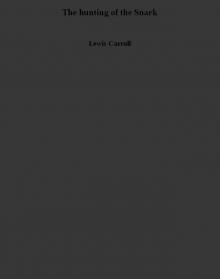 The hunting of the Snark
The hunting of the Snark The Complete Alice in Wonderland (Wonderland Imprints Master Editions)
The Complete Alice in Wonderland (Wonderland Imprints Master Editions)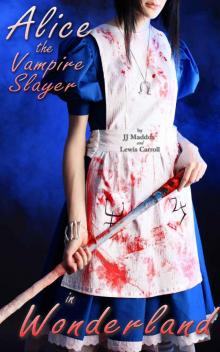 Alice in Wonderland: The Vampire Slayer
Alice in Wonderland: The Vampire Slayer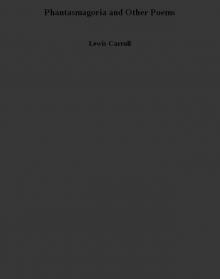 Phantasmagoria and Other Poems
Phantasmagoria and Other Poems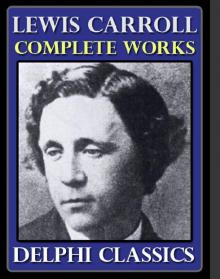 Complete Works of Lewis Carroll
Complete Works of Lewis Carroll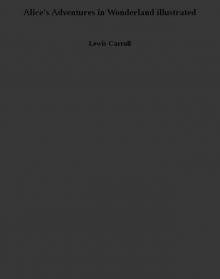 Alice's Adventures in Wonderland illustrated
Alice's Adventures in Wonderland illustrated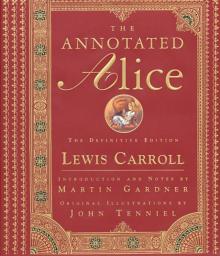 The Annotated Alice: The Definitive Edition (The Annotated Books)
The Annotated Alice: The Definitive Edition (The Annotated Books)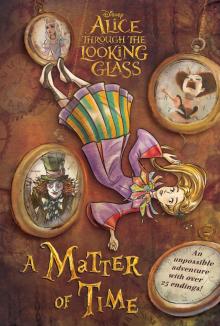 Through the Looking Glass
Through the Looking Glass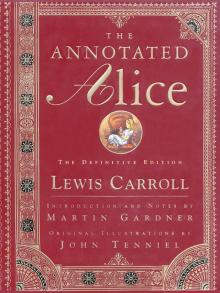 The Annotated Alice
The Annotated Alice Alice in Zombieland
Alice in Zombieland